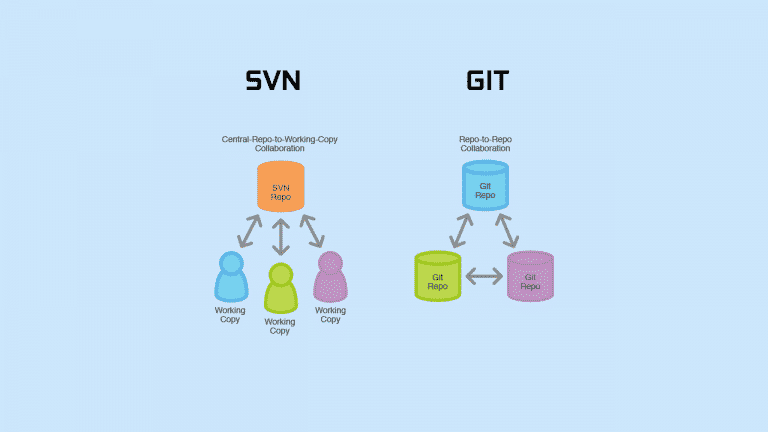Git and SVN Explained
Git is a Distributed Revision Control System and SVN (Apache Subversion) is a Centralized Revision Control System. The usage of Git has increased making distributed version control systems popular. According to a few reports in the past, Git has outshined SVN as a Version Control System (VCS).
Also, read: 5 Best Github Alternatives for Programmers and Developers
Differences Between Git and SVN Explained
- Git repository is stored locally within the .git. The dev can work anytime even with a poor internet connection.
- Git’s active feature work is developed in separate branches whereas SVN’s active feature work is developed within subdirectories under branches.
- In Git the code stores the content as metadata, but when coming to SVN it stores content as files.
- Git does not have a global revision no and SVN’s revision no. is a snapshot of source code at the particular point of time.
- The branches in Git are used every day and a core concept by every user. In Subversion, they are bulkier and often used carefully.
When looking at the differences between Git and SVN we can see Git has pros than SVN. But Git has few cons too. Learning Git is not easy initially compared to SVN. Another thing is if the Developer on a particular project has worked with centralized VCS, they might have to notice some slowdowns. Few GUI applications will make Developer’s life easier and, they also offer command line interface if in case extra advanced commands are required.
Below is the complete breakdown of Subversion vs. Git both Myths and Facts explained clearly. Check below:












The above snippets are taken from SVNvsGIT.com. Check the website for more information about Subversion vs Git. Let us know your thoughts in the comments section below about Git and SVN. What do you prefer and why?


